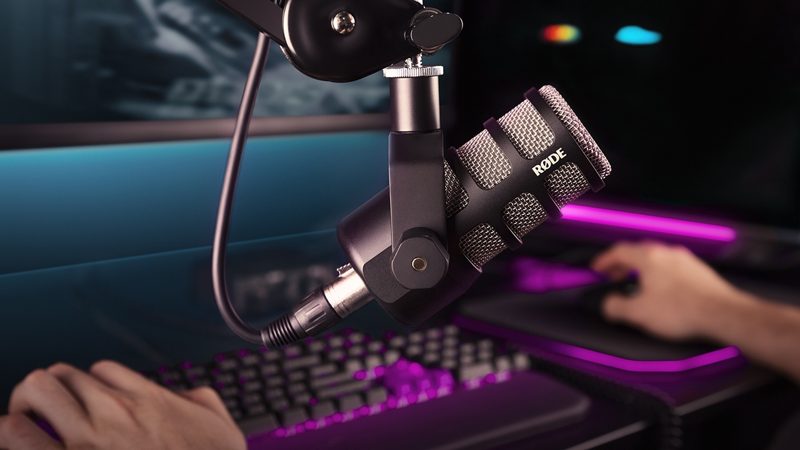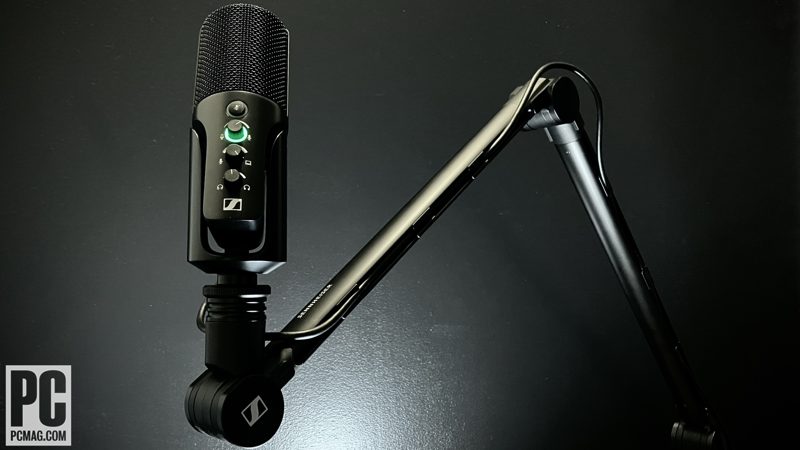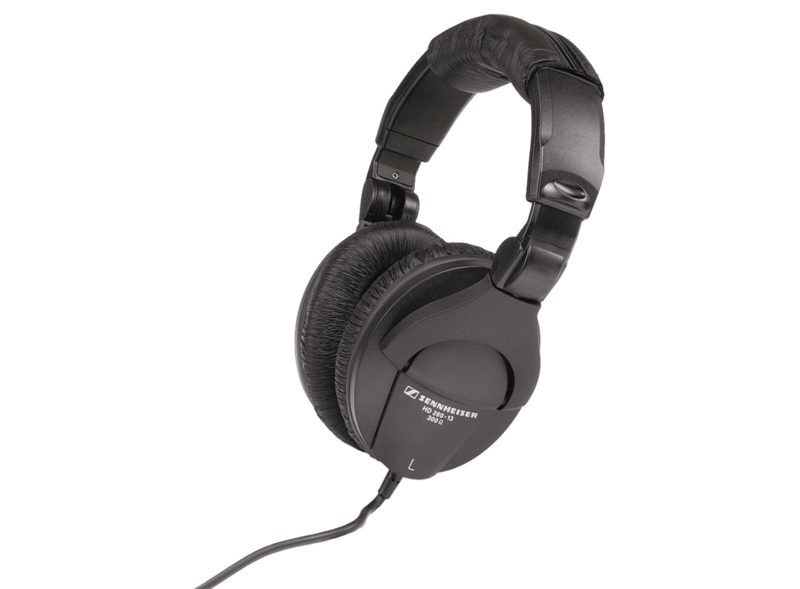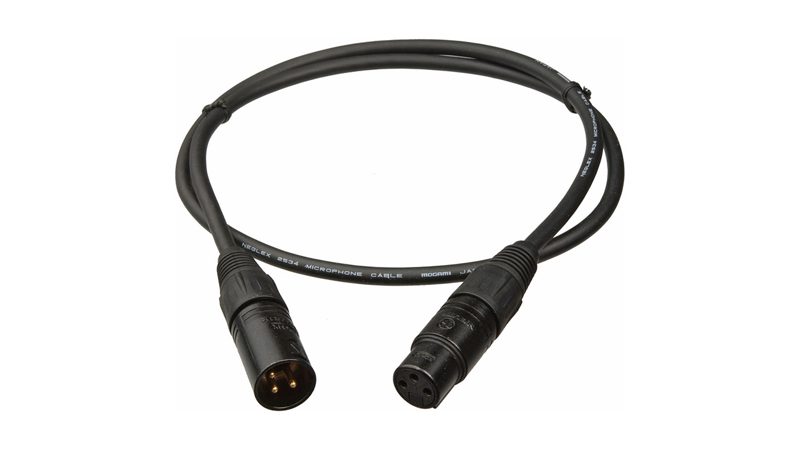Whether you’re just getting started or looking to upgrade your podcast recording setup, gathering all the requisite gear can seem daunting. After all, a good pair of studio headphones and a top-notch microphone can set you back a hefty chunk of change. And then you must consider accessories, such as desktop mic booms or stands, cables, mixing stations, and audio interfaces.
PCMag's experts have independently tested recording equipment for over as long as podcasts have been a thing, so we can help you find the podcast tech that best fits your needs. Among our Editors' Choice selections are the all-in-one Sennheiser Profile Streaming Set, the closed-back Beyerdynamic DT 700 Pro X studio monitors, and the USB-based Apogee HypeMiC with built-in analog compression; start your search here if money isn't a concern. Of course, you don't need to spend a fortune to seriously upgrade your sound, so we included several budget-friendly options, too. Be sure to click through to our in-depth reviews before you buy so you know exactly what to expect.
Best High-End USB Mic

The Apogee HypeMiC takes USB mic recording to another level, applying analog compression to the signal before digitally converting it. That means you get the convenience of USB connectivity, along with the gain and compression of an analog signal, in one easy-to-use package. The HypeMiC isn't ideal for purists who likely prefer the XLR route, but if you're fine with USB connectivity, this is an excelent option from an industry titan that specializes in analog-to-digital conversion.
Best Budget-Friendly USB Mic

You’ve probably seen this mic somewhere—the very cool (no pun intended) Blue Snowball Ice has become a standard of sorts for video productions and podcasts alike, delivering quality audio free of digital signal processing (DSP) for an impressively low price. While it doesn't quite compete with other mics on this list, it's affordable enough that you can buy several of them for the price of a single higher-tier alternative. And if you pay attention to your mic placement and technique, you can get solid recordings out of it.
Most Flexible Controls

The high-end SteelSeries Alias Pro mic looks sophisticated, captures clear audio at up to 24-bit/48kHz quality, and comes with an adjustable, shock-absorbing desktop stand. It connects via XLR to an LED-adorned mixer with mute controls, two USB-C ports for recording to a PC, and a 3.5mm input for monitoring with wired headphones (models with lower impedance work best). The mic's biggest appeal, however, is its companion software that provides comprehensive streaming controls, LED customization options, and parametric equalizers for both the mic and any outputs.
Best Hybrid USB and XLR Mic

The dual XLR/USB-C Shure MV7+ mic is a standout for recording vocals thanks to its warm tone and outstanding detail. It covers a frequency range of 50Hz to 16kHz and can record at up to 24-bit/48kHz quality. The sturdy aluminum frame, built-in pop filter, and automatic denoiser add value, as does the available desktop and mobile recording software. The standard kit doesn't include many accessories, but spending more can get you a desktop stand, a boom stand, or even a pair of Shure's monitoring headphones.
Best Secondary XLR Mic

The Rode PodMic is a simple XLR workhouse that is conducive to multi-speaker podcasts because of its affordability. The audio is relatively uncolored, and, although you may want to add a bit more crispness to the high-mids or dial back the lows slightly in post, the initial signal is clear enough that doing so is not a necessity. And the built-in pop filter works quite well (as long as your recording subject vocal has decent mic technique), which means you likely don't need an external one.
Best USB Mic and Boom Arm Bundle

Good mic placement is imperative for ensuring a quality recording, and a sturdy boom arm helps with just that. You can buy a dependable table-mountable arm separately (see our next pick), but the Sennheiser Profile Streaming Set gives you both a transparent side-address condenser mic and a swiveling boom arm that's easy to install in a single package.
Best Desktop Mic Mount

A studio arm helps you make quick, quiet mic adjustments, frees up desk space, and, let’s be honest, looks cool. With the Rode PSA+, vocalists can move the mic while it’s live, and as long as they use a gentle touch, the mic shouldn't pick up any sounds or vibrations. It can handle just about any mic weight, from the very light to the bulky, and also makes cable management a breeze. Make sure you go for the new PSA1+ over the original PSA1; the former offers several improvements that enable more graceful movements.
Best Pop Filter

Royer PS-101
The Royer PS-101's metallic screen should be the first indication that this is no garden-variety pop filter—the louvered metal redirects air passing through downward and the filter itself disperses plosives in a natural-sounding manner. Sure, dispersing plosives is what all pop filters do in a bid to protect the mic’s capsule, but some of them can be a little louder than others. The PS-101 is both aurally and visually transparent; on the latter front, the ability to see the mic through the filter can be a real advantage for precision vocalists. Royer makes the PS-101 as the perfect complement to its ribbon mic lineup, but the pop filter work wells with just about any mic with which you pair it.
Best High-End Studio Headphones

The Beyerdynamic DT 700 Pro X headphones are our pick for premium studio over-ears. In addition to being exceptionally comfortable for long listening sessions, they deliver accurate audio with a focus on clarity and balance. They don't exaggerate either the bass or the highs, so if a track features deep bass, you hear it as it’s intended. The headphones also passively block out ambient noise and don’t leak much audio, which makes them ideal for podcast recording and mixing.
Best Budget-Friendly Studio Headphones

The Sennheiser HD 280 Pro headphones have been a staple in recording studios for decades and are our go-to recommendation for tracking and mixing audio on a budget. The earpads feature generous cushioning, while the thick, semi-coiled cabling is sturdy. The pair reliably stays in place for musicians (or podcast hosts) who tend to move around during recording. If you need to hear audio clearly and precisely in the studio, these are simply an excellent value.
Best Audio Interface

Focusrite Scarlett 2i2 (3rd gen)
If you plan on recording your audio to your computer and intend to use anything other than USB mics, you need to add an audio interface to your setup. The Focusrite Scarlett 2i2 is well-made, easy to operate, and delivers quality, transparent audio. Its two XLR inputs double as quarter-inch instrument inputs, so you can record synths and guitars directly, as well. Furthermore, an Air button allows for brighter, crisper vocals, while you get separate knobs for monitoring volume and headphone levels. Focusrite also bundles a beginner version of ProTools for those interested in trying out one of the industry-standard audio editing suites.
Best All-in-One Recording Station

If recording to ProTools or GarageBand is more involved than you want to get, an all-in-one recording system like the Rodecaster Pro II might be a better fit. This mixer has four mic inputs, works with both XLR and USB mics, and even has Bluetooth channels to loop in remote guests. It also offers built-in sound effects and is intuitive to use. Plus, it looks cool on a desktop.
Best Mic Cables

Mogami Gold Studio XLR
Most USB mics come with their cables, but most XLR mics don't. Therefore, if you plan to record with a quality XLR mic, you need a quality mic cable. You can blow some serious money on cables if that’s your thing, but Mogami cables strike a solid balance between performance and price—a 6-foot cable costs only about $60. This cable terminates in gold-pin Neutrik connectors and can transmit audio cleanly, clearly, and reliably.


